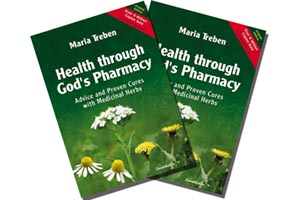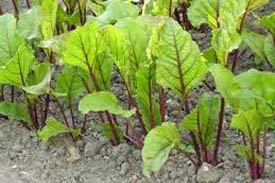Gardening 2010: Seeds make money for you. Part I
 Buying new seeds each year is very costly and perhaps not necessary if you have left over seed from last year, or even five years ago. This discussion focuses on seed companies and proven/disproven results, seed storage and of course making money by saving your own non-hybrid heritage seeds. Marketing ideas are also discussed.
Buying new seeds each year is very costly and perhaps not necessary if you have left over seed from last year, or even five years ago. This discussion focuses on seed companies and proven/disproven results, seed storage and of course making money by saving your own non-hybrid heritage seeds. Marketing ideas are also discussed.
This was a busy year for me with seeds. All my old, old long forgotten tested seeds of yesteryear were fed to the wild birds, the jars cleaned out, bleached, and new blank labels affixed for filling with 2010 new fresh (expected) Open Pollinated (OP) seeds. Seeds cost money and seeds are not always available for the location you live in that produce the best results. We save seeds that produce best for us in the garden and from those delicious fruits we selected the best of the plants that grew them and save their seeds.
My wall 4’ X 4’ storage rack of pint size jars would in fact, when full, represents several hundred dollars in value if it were to be replaced by purchase. Also I store seeds in a small frost-free refrigerator, and in dark gallon jars in my herb- house-processing center. Formally it was a 1940‘s milk house for two milking cows. In addition I store grasses, wheat, barley, etc in five gallon buckets, Dry Ice-CO2 packed as discussed in early Stocking Up articles. Lest I forget I collect baby food jars and utilize them for tiny seed, usually viable for only a season or two. The jar lids are painted to reduce rust and a 1/32” hole is drilled in each lid to allow for temperature fluctuations thereby not sucking in moisture.
Could you sell seed? Yes, to a degree if you meet Federal and State Agricultural guidelines for interstate shipment, but those tiny growers usually die on the vine. What the tiny grower does to make money with seeds is have a dominant specialty crop and harvest seeds therein, selling that mono crop to a seed company. Richo Cech made a simple video about http://www.horizonherbs.com/ He walked us through his file cabinet system and storage facilities. It is most interesting and worth the ten dollars.
To save a mono crop is in some ways easier and suitable for the housewife if she specializes in rare heirloom seeds, let’s say from an “Old Indian-Amish-Colonial-secretly smuggled- at great risk and blessed by Indian Shamans “ squash seeds that pique the mystery, interest and purchasing instinct of the consumer. You will note for the organic growing minded gardeners in the various magazines that heirloom seeds are always popping up to tantalize you. So if you can locate some old time seeds from old timers in the area and have success in growing them you might market them directly to the Seedsman in the industry. If they are a good seller in repeat catalogs you have a good potential moneymaker if you lock in that you are the sole supplier in the contract.
The same perimeters are for those more advanced in seeds by creating your own hybrid variety, getting a patent on it and getting a royalty on every packet sold. This is much more complicated but offers great potential.
Selling locally small packets of seed is not really viable as it takes years to develop a market on your own. Starting your small plants and selling them in the spring at a Farmers Market can make more money. This of course entails having a green house, albeit not a big one, but more investment, labors and consumables. The expense to produce that perfect tomato plant is passed on to the consumer.
Doing hybrid plants and/or developing your own hybrid plants for sale is the best way to go as your secret Old Time OP seeds and plants can not be compromised by competitors. You are the specialist in one specialty product; and in the spring, gardening fever dominates purchases.
The key thing to remember is that you are competing with major growers in the area who have multiple giant greenhouses, trucks, tractors and big money to move the market, yet these growers also work on a small threadline and if they fail in a season it is a major loss, wherein your few hundred plants can be absorbed at a loss with no calamity to the family.
Last spring 2009 a tomato plant at the Big Box stores was selling for five dollars. As the season moved on the prices dropped to a low of three dollars a plant. Then of course a virus emerged from the soil medium the mega growers were using and wiped out everybody. Had you your own small supply, untouched by a virus or white flies you would have made a bundle. This suggests the hazards in the industry and why I suggest starting small to learn the ropes before you become glassy eyed with illusions of wealth.
Squash and Pumpkin large seeds are the easiest to deal with for cleaning, washing, bleaching, drying and packaging. Tiny, almost dust size seeds such as Aramath remain full of chaff and in such a situation with your heirloom seed you need a seed cleaner machine. Unfortunately finding a farm size Seedboro™ seed cleaning machine is difficult as the only seed cleaning machines made today are super expensive ones for laboratories, extension colleges and the like. However, short of me leaving you mine in my will, you might advertise in back woods towns and farm journals that you are looking for a working old time seed cleaning machine and see what you can find. True, you can do it by hand but that is laborious and requires extra help for the other farm chores.
Another necessary tool is a portable hammer mill. Mine is ostensibly marketed originally as a brush/chipper-grinding machine sold under the name of W.W.Grinder Co Inc.™ (Model # 55-20-4) This has been perfect for me. When doing wheat, as an example, I would “thrash” the wheat, catch it in a washtub, and dump it in the hopper of the Seedboro © seed cleaner and Voila! Clean separated seeds from the chaff. Farmers did this for a hundred years with various manufactures, but as the small family farm died out and mega business million-dollar farm machinery took over as the small equipment disappeared. Keep looking, you might find it in some old barn, or on e-bay. WW Grinder Co. Inc. sold out to Troy Built, then that went under and Troy Built was sold out to another firm now marketing a China model under the same name.
So we see that as one becomes specialized, equipment may be necessary. Even the self-sufficient gardener can be enticed for bigger and better. I use myself as an example of discussing what I have found useful and what I do to meet my sole needs. Yes, you can do with less, or more. It just means you have to find your own medium. Reconsider keeping it basic with easy to clean seeds, plants and limited investment, however it all starts with a seed and your garden labors. Let us get back on track with the seed.
Cross bred-hybrid seeds, as marketed on the advertisement in the catalog, and on the seed packets are developed to produce exceptional-grow anywhere- quality plants. These are not important, nutrition is not important with many of these plants, as volume in successful growing is the goal. The big push today is hybrid for saving world hunger, or is it making money? Anyway the FDA and Agriculture Department of the US Government stated,” Hybrid Seeds (more specifically) Genetic Modified Organisms (seeds) will dominate the future.” I am not keen on GMO seeds for all the reasons previously expressed in my articles and with other writers. The GMO business is rapidly taking over the worlds plant food supply and there is nothing I can do about it, except get on a bandwagon of dissent. OK! I dissent. Now back to the GMO seeds. They are cross-pollinating in adjacent fields with other like plants. Obviously in a few short years everything will be GMO crossed. When you cross a plant to make a hybrid the seed will not grow true to the parent plant. What then becomes disheartening is that in the next few years to maintain a “true” representation of the GMO forced on you is you have to buy only pure certified new GMO seed, which is not cheap. Once this becomes worldwide as it us about now with grain crops, you can expect to see it in plants we are more familiar with. Visit this site: http://www.huffingtonpost.com/2010/01/12/monsantos-gmo-corn-linked_n_420365.html
Note that the article suggests GMO corn grains will cause liver damage. I take 1 daily Milk Thistle silybum marianum capsule at 450 mg a day-commercial made- for my liver because of a Codeine-Tylenol ™ combination pain reliever I am forced to take till my other herbs heal my injury. Tylenol at heavy dosage is the recent documented number one killer of over the counter medications. BEWARE! Heavy dosage of Tylenol™ has been documented as a causative for liver disease. Milk Thistle is documented and now promoted to aid liver disease recovery.
I grow Milk Thistle and if I grind the fresh dried seeds as a preventative/restorative to my liver, it would be 1000 mg (maximum) per day. It is easy to buy a capsule machine at a few dollars with gelatin capsules, see www.mountainroseherbs.com . A small coffee/spice mill works well to grind the seeds into a powder. A small weight scale is easily obtained online from several sources. Remember you are dealing with mg not full grains weights.
Unless you live in a rural, isolated, goat farm, long-range forecasts are poor for saving your heirloom OP seed, as the wind will eventually blow pollen from an unknowing neighbor to your plants. Our future remains in question on this fact. Eventually we will all have no option. However in the mean time, OP remains what I want and what I know is best for me. The next generation will have new GMO’s to deal with. We are at the cusp of world food change.
I am always searching catalogs and new sources for interesting seeds. I am not opposed to hybrid seeds per se as some have been just marketed as hybrid but they are really OP seeds. This is a tiny percentage of the market however. Some seeds are listed as “developed seeds” and they are non-hybrid, or hybrid developed that act as OP seeds. California Wonder Peppers™ come to mind as you can save those seeds and gain a pure offspring. Developed seeds are essential what you can do in your own garden by selecting the very best plants and isolating their growing the next and repeated generations in your greenhouse-safe from cross pollination and GMOs. Green house growing for seeds is a new concept for the home gardener seed-saver, and for example this past year I planted a few red/purple carrots. Garden grown carrots will not produce viable seeds as in the second year when the seed stalk comes up, and the Umbels form with flowers. The ancient parent-Queen Ann’s Lace, i.e.: the wild carrot, spreads its pollen and will cross with your carrot seed producers. Only by having a tight greenhouse can you escape this problem. Most carrots for seed are grown in Texas, as an example, as the wild carrot is not a problem therein.
Am I stimulating thoughts? Good! Next week we will discuss more on seeds.
God Bless,
Copyright: 2010, Back2theLand.com, Mark Steel



